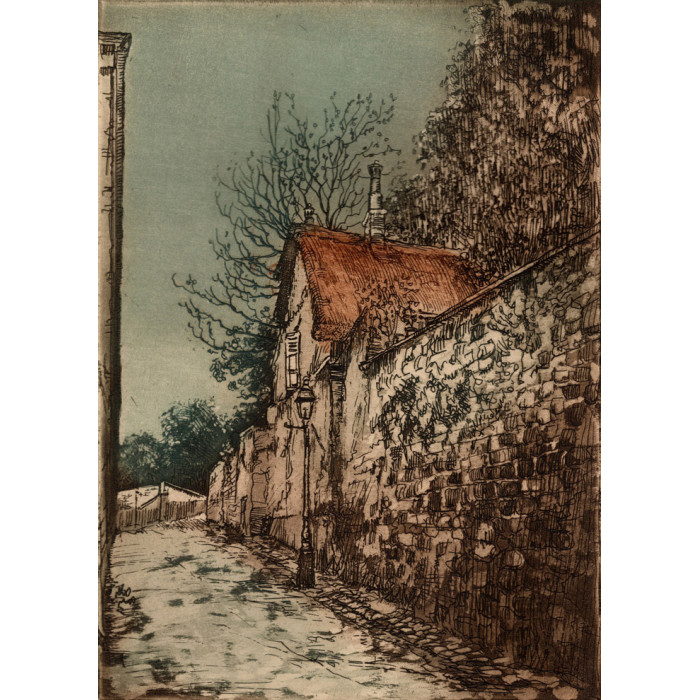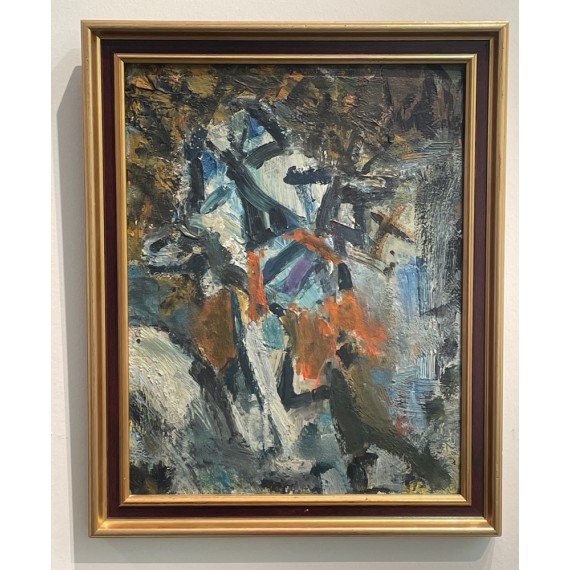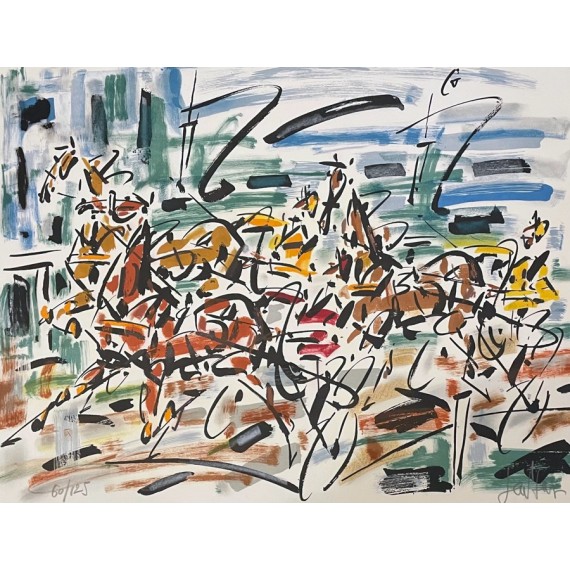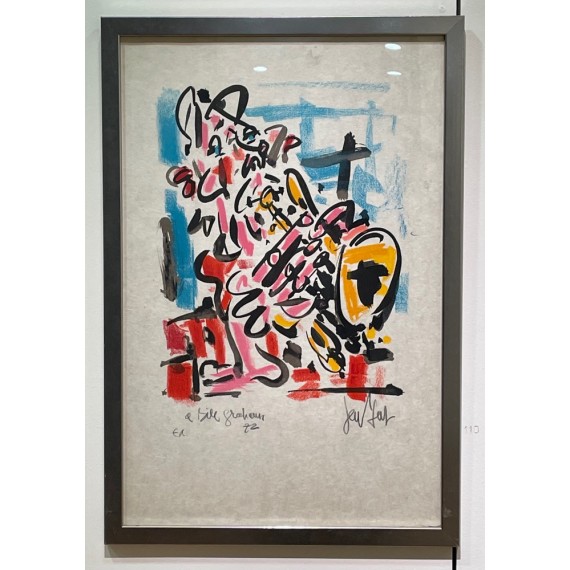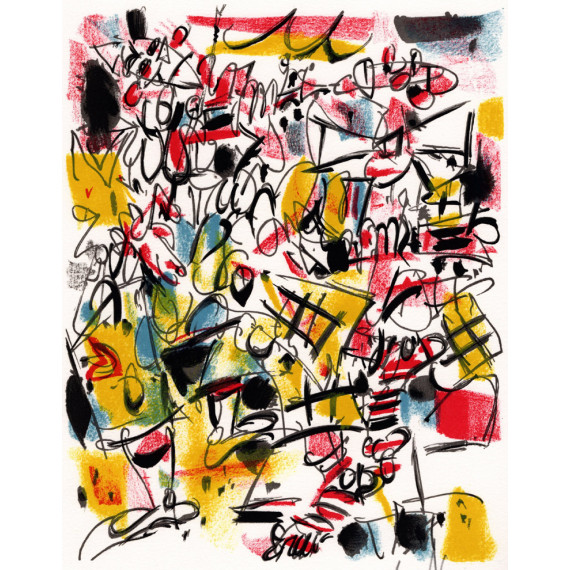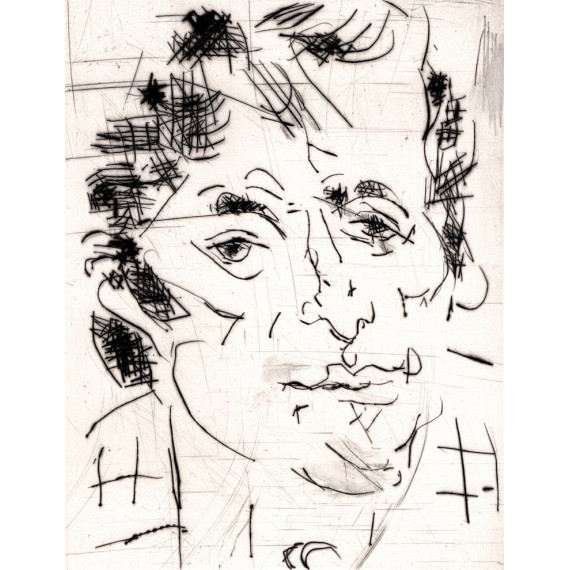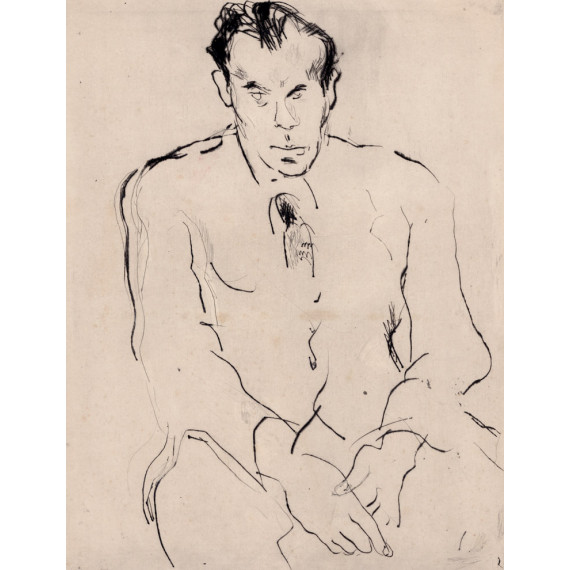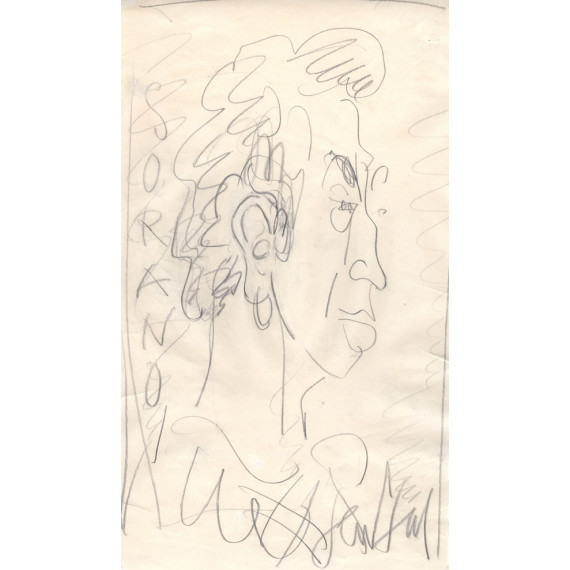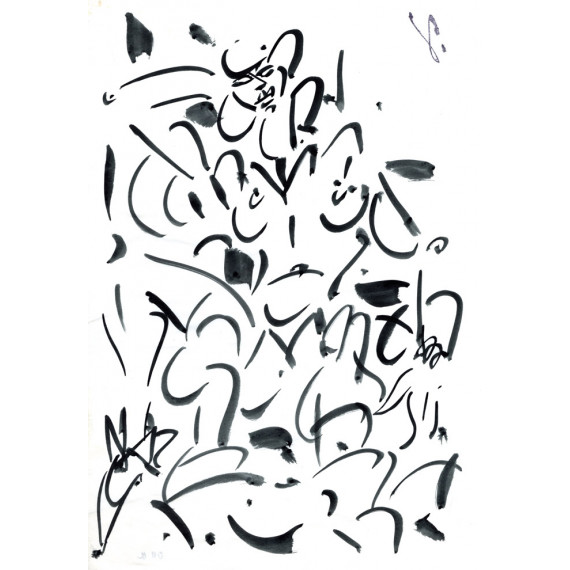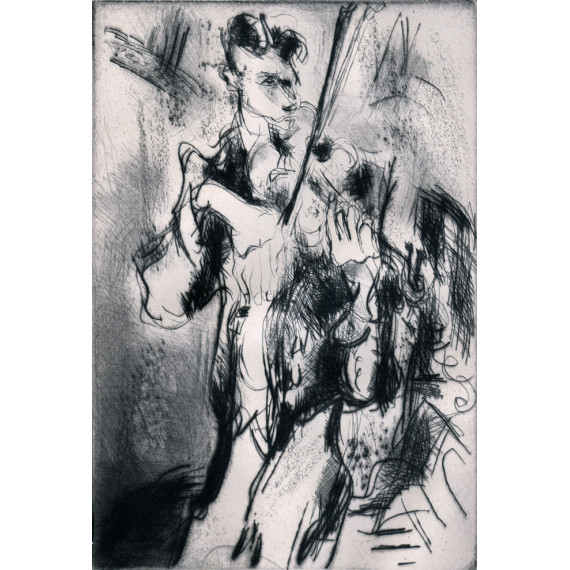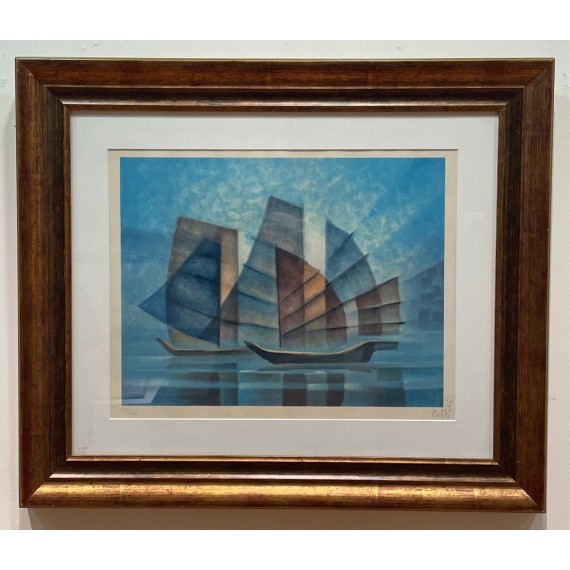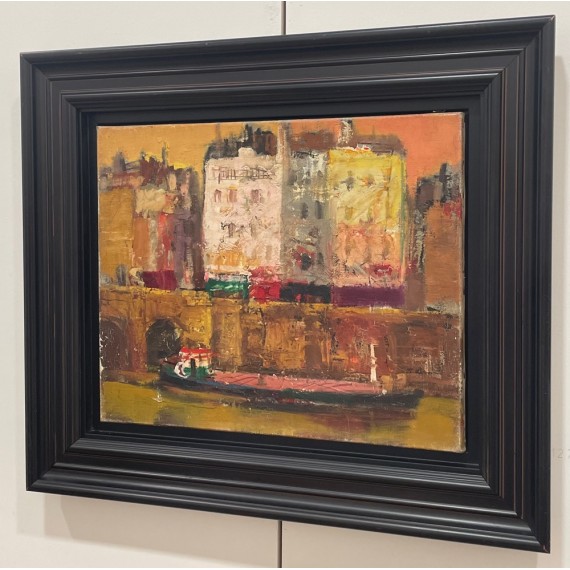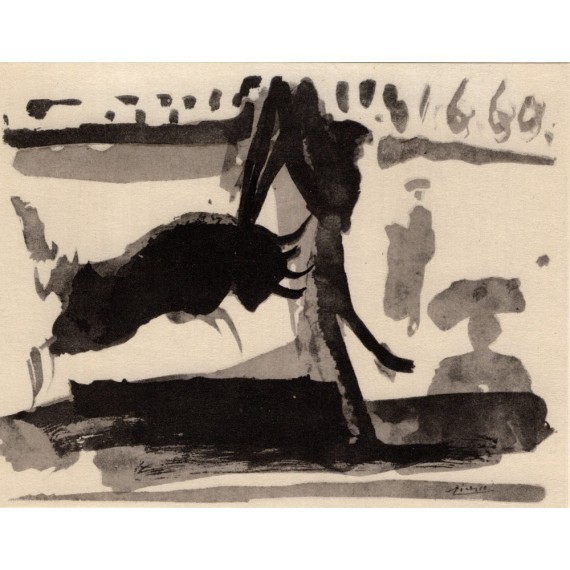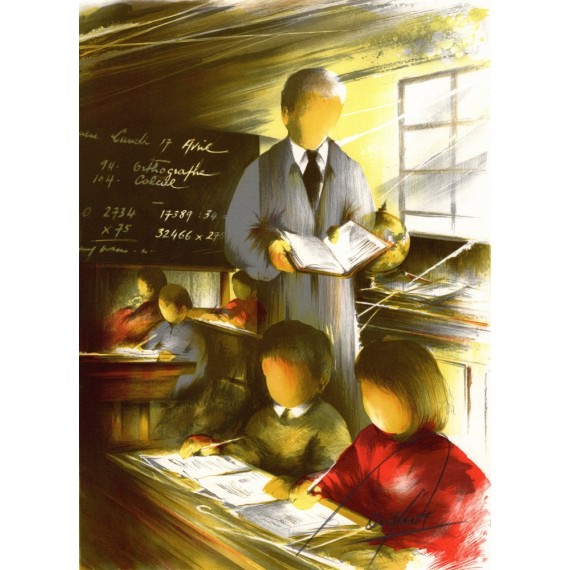///////// DESCRIPTION /////////
Etching with aquatint on paper.
Date: circa 1920 [between 1918 and 1924]
Dimensions in the bowl (drawing): 22 x 16 cm.
Condition: see photograph.
Aquatint or aquatint is an etching process. This process consists of covering a metal plate with a layer of more or less dense protective powder, then immersing it in a basin of acid. It allows, thanks to the use of fine resin particles (rosin or bitumen) sprinkled then heated, to obtain a surface composed of points rather than lines by which we obtain different shades of color.
Gen Paul is introduced to aquatint by the engraver Delâtre.
Very quickly, he will master the technique.
In 1918, he began to earn money by selling copies of the Grand Master of the Louvre on cigar boxes and aquatints to second-hand dealers.
It is likely that he made at least a hundred different etchings in aquatint between 1918 and 1924, sometimes with the same plate, the subject being treated with variations: day, night, in bistre, ...
Most are views of the Butte Montmartre, some of Paris, and of the same size: 16x22cm in the bowl.
It now seems certain that Gen Paul did not sign these engravings. And it is very likely that Delâtre made the prints and signed them. These engravings were also very probably signed by second-hand dealers. This does not change the fact that these engravings are original: an original engraving is an engraving engraved by the artist himself, regardless of whether he signs it or not.
This is why these works were not signed "Gen Paul" but from one of his two pseudonyms: Eugène Lautral (Eugène is his first name and Lautral because of Lautrec) or Paul Trélade (Paul being his name and Trélade it is Delâtre en verlan), the latter is the most commonly used.
To our knowledge and to date there is only one aquatint of this series signed in pencil "Gen Paul" and by the hand of Gen Paul.
The print depends on the success of the print, which explains why they are not numbered.
Initially, to test the market, a few proofs are drawn, if successful it makes the total draw.
This is how some are extremely rare, others more widespread.
It is likely that today there are only a dozen copies of the majority of aquatints, and that 20 of these engravings have been drawn in more than 130 copies (those from the book of Parmenia: Around our Mills published in 1922 with a set of 20 engravings by Gen Paul).
The engraving plate is scratched once the print is made which prevents any reprinting.
To our knowledge, there are only 3 engravings which were the subject of a late print (therefore not produced circa 1920) and this under the control of either Gen Paul or Gabrielle Abet: a view of the Moulin Rouge, a view of Rue Lepic and a view of the Agile Rabbit. The print was produced at least 70 copies the engraving of rue Lepic which is numbered and bears the stamp of the signature.
In the 1920s, these engravings were mostly hung on threads with clothespins in the stalls of Place du Tertre or were laminated on cardboard or more rarely on wood, boxes etc ... Many have been destroyed and rare are those in very good condition.
The value of these engravings therefore mainly depends on the condition, the subject and its rarity.
Julien Roussard.
(Text © Julien Roussard / Galerie Roussard).
CERTIFICATE OF AUTHENTICITY BY JULIEN ROUSSARD, SPECIALIST OF THE PAINTER.
///////// PROVENANCE /////////
- Private collection, Paris.
///////// BIOGRAPHIE /////////
Gen Paul
born in Montmartre in 1895, died in Paris in 1975. He is one of the greatest French expressionist painters and has produced several works during his full expressionist period considered as masterpieces.
His career began on the Butte Montmartre, initiated by great artists who lived there and that Gen Paul meets in this village: Frank-Will for painting, Eugène Delâtre for engraving.
His career is divided by all historical observers and art critics in four periods and will be marked from the beginning by the injury of Gen Paul during the First World War, which caused him to lose his right leg.
It is from 1924, that Gen Paul initiates a solitary evolution, and enters its full Expressionist period where it heckles the subjects and comes to create a personal form of expressionism of the movement, extremely gestural, based on the emotion and intensity, which will make it one of the greatest French expressionist painters. Faces and characters take on more and more importance, especially hands.
Until September 1930, he traveled, worked constantly, seized with a kind of creative frenzy. The Bing Gallery, one of the most important in Paris, exhibits him in 1928 with his contemporaries Picasso, Rouault, Braque, and Soutine. Bing in a long text devoted to Gen Paul explains the importance of his painting and his talent. He paints musicians that we can feel playing, impressive portraits, as well as Basque landscapes, views of Montmartre where everything comes alive, is moving.
Exhausted by a life too intense, undermined by alcohol and an infection contracted in Algiers, Gen Paul collapses as he passes through Madrid in 1930, and will not find the same energy in his painting. But he will continue to realize works of great importance. Observer of his time, he captures the evolutions of his time, and is a precursor of American Abstract Expressionism.
We can not talk about Gen Paul without mention his strong personality that will have marked all the people who attended him or even crossed him. In his studio was a kind of cenacle on Sunday morning; the whole Paris went there, comedians, musicians, doctors, writers, painters ...
Hospitalized in 1975, he died of cancer the same year. A sublime retrospective was dedicated to him in 1995, on the occasion of the centenary of his birth, at the Couvent des Cordeliers in Paris. Directed by André Roussard and Carlo a Marca, this exhibition brought together a hundred or so expressionist works from the second period (1924-1930), considered as masterpieces of painting. The Gazette of the Drouot Hotel commenting on the exhibition qualifies the painter as follows: "Gen Paul is undoubtedly the greatest representative, and perhaps the only, expressionist of the French tradition". André Roussard was one of the main merchants of Gen Paul. He organized the biggest exhibitions dedicated to him after his death, and wrote his biography in 2006 considered as the only text of historical reference of quality.
His son, Julien Roussard, is today the reference person in the field, taking over from his father who died in 2013. He is a specialist in Gen Paul. He organized several exhibitions of Gen Paul and the exhibition "Pre-War / Post-War" in October 2012 which was the main personal exhibition organized by an art gallery for Gen Paul. More than one hundred artworks representative of all the artist's periods have been shown in two places, thus offering a complete panorama of the work of Gen Paul.

